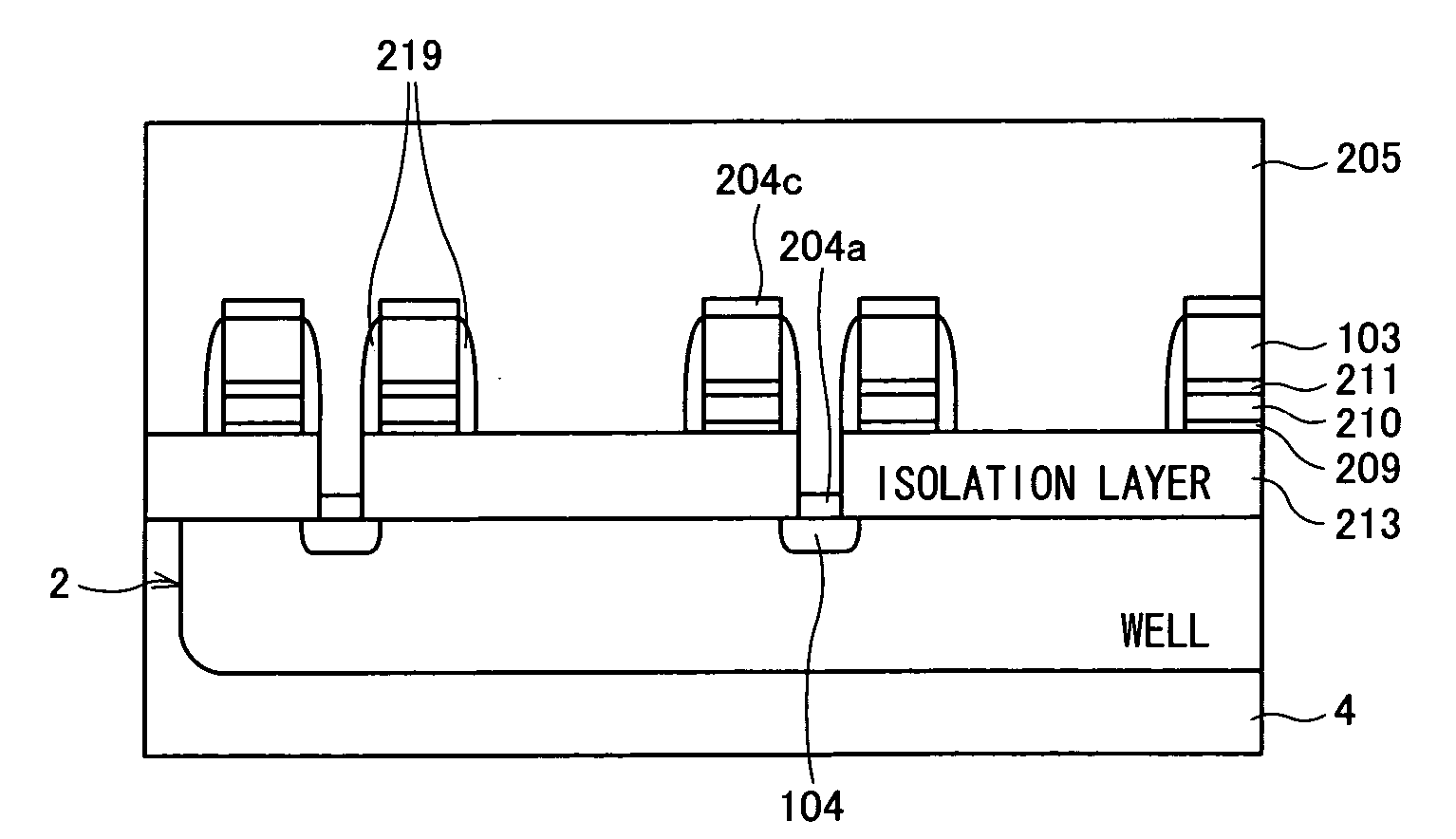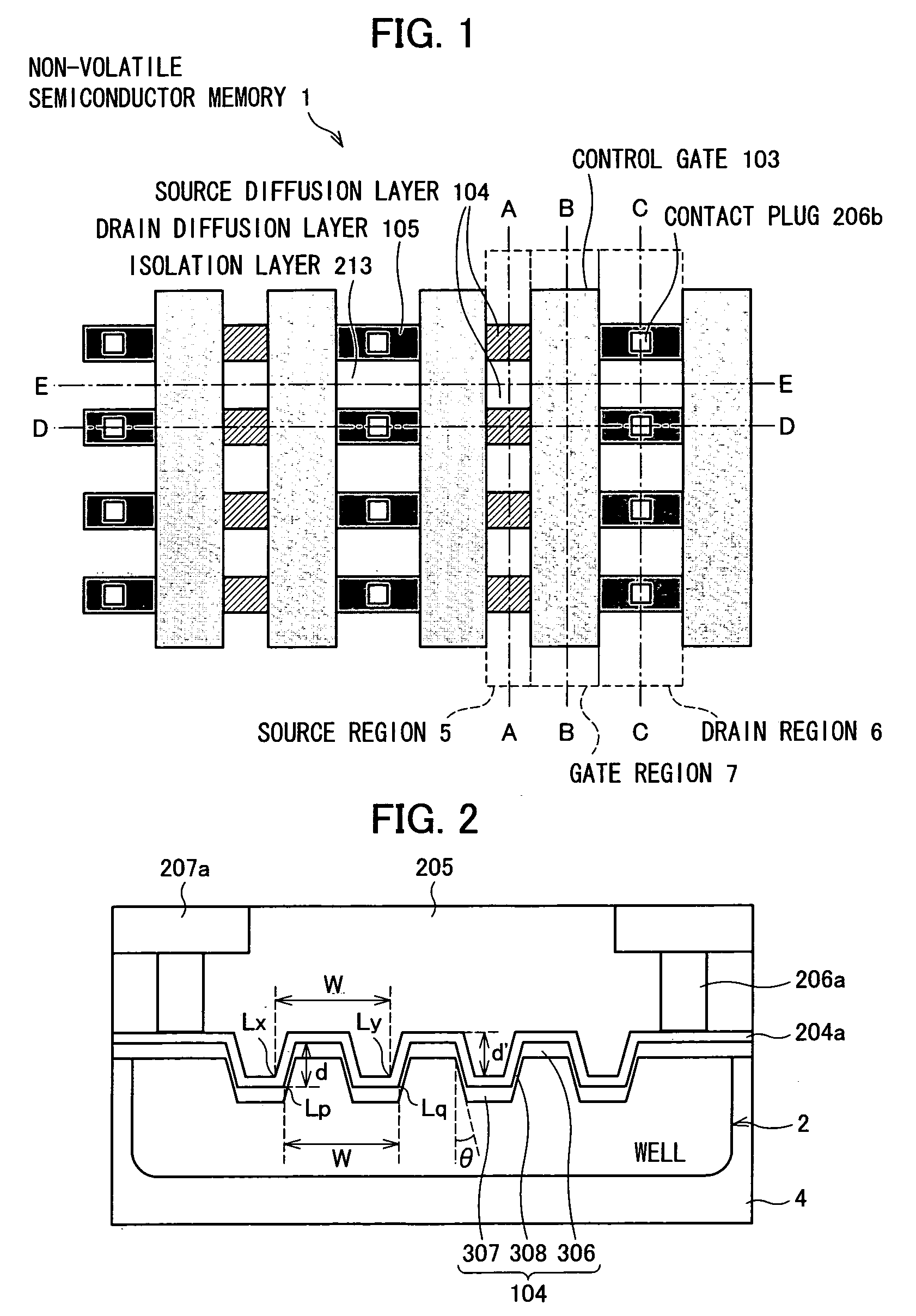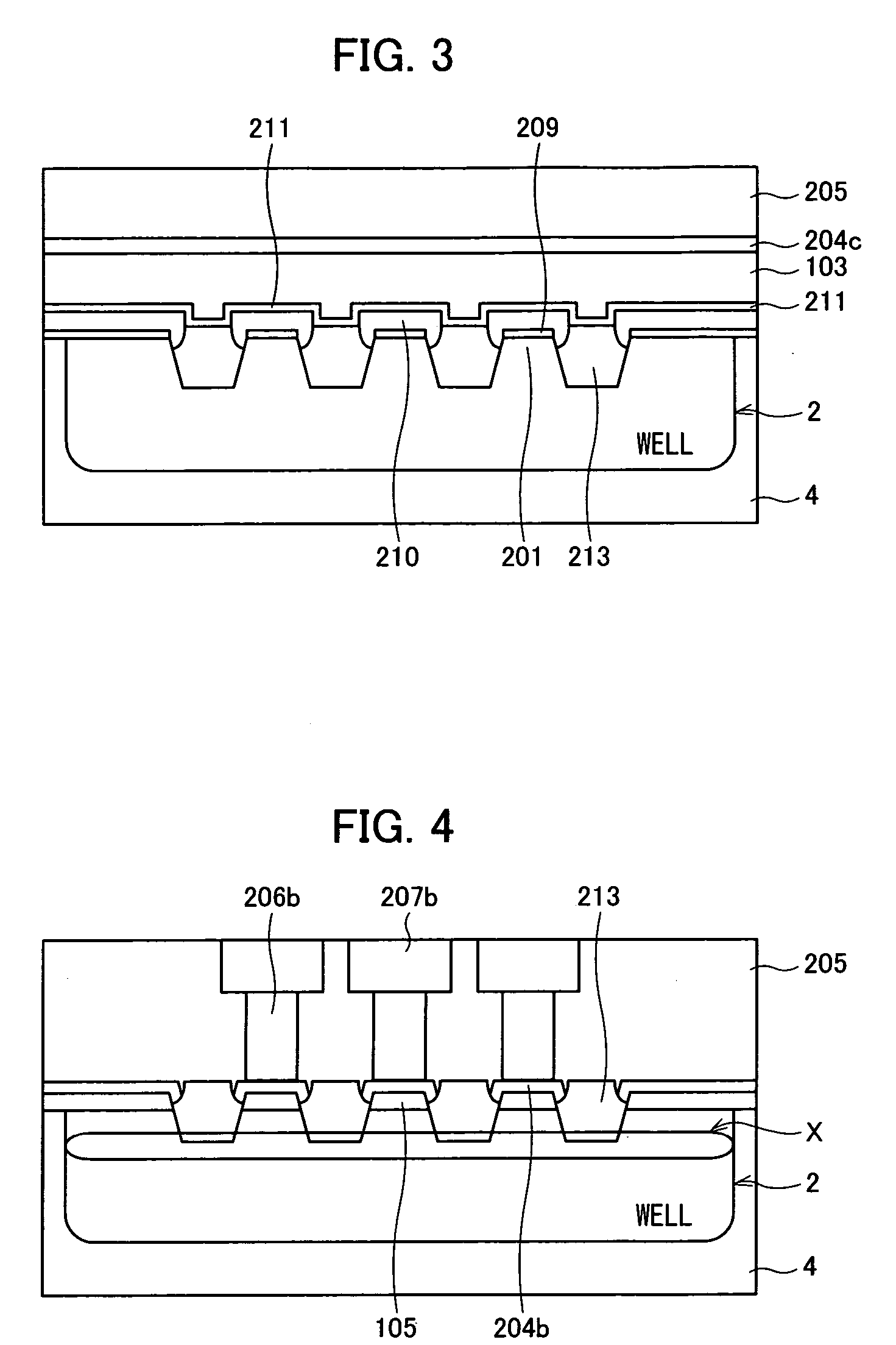Semiconductor memory
- Summary
- Abstract
- Description
- Claims
- Application Information
AI Technical Summary
Benefits of technology
Problems solved by technology
Method used
Image
Examples
Embodiment Construction
[0020] The following describes an embodiment of the present invention, with reference to FIGS. 1 to 9.
[0021]FIG. 1 is a perspective plane diagram illustrating a non-volatile semiconductor memory of the present embodiment. FIGS. 2 to 6 are cross sectional diagrams illustrating the non-volatile semiconductor memory.
[0022] As illustrated in FIGS. 1 to 6, the non-volatile semiconductor memory 1 of the present invention is provided with: a P-type well 2 formed on a substrate 4; a control gate 103; an N-type source diffusion layer 104; an N-type drain diffusion layer 105; a floating gate 210; an isolation layer 213; a silicide 204 (204a to 204c); an interlayer insulating film 205; a contact plug 206 (206a, 206b); and a metal wiring 207 (207a, 207b).
[0023] The non-volatile semiconductor memory 1 is arranged so that a source region 5, a drain region 6, and a gate region 7 are defined as illustrated in FIG. 1, as viewed from the top. Specifically, the source region 5 and the drain region ...
PUM
 Login to View More
Login to View More Abstract
Description
Claims
Application Information
 Login to View More
Login to View More - R&D
- Intellectual Property
- Life Sciences
- Materials
- Tech Scout
- Unparalleled Data Quality
- Higher Quality Content
- 60% Fewer Hallucinations
Browse by: Latest US Patents, China's latest patents, Technical Efficacy Thesaurus, Application Domain, Technology Topic, Popular Technical Reports.
© 2025 PatSnap. All rights reserved.Legal|Privacy policy|Modern Slavery Act Transparency Statement|Sitemap|About US| Contact US: help@patsnap.com



